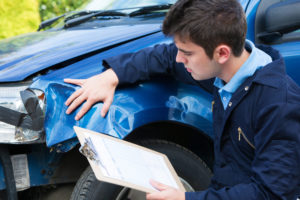
Report: Auto repair costs increased by 40% in 5 years
By onBusiness Practices | Collision Repair | International
The cost to repair a vehicle increased 40% from 2018 to 2022, according to a UK-based warranty and insurance provider.
Intelligent Mooring said it analyzed more than 12,000 warranty claims filed throughout the past five years and discovered “higher prices for repairs are here to stay for the foreseeable future.”
The study, released this week, revealed that repair costs began spiking following the UK’s Brexit referendum in 2016, with warranty claims costs rising 19% from 2018 to 2019, and another 10% from 2020-2021.
Repair fees continued to skyrocket as the pandemic and other geopolitical events triggered supply chain issues and skyrocketing energy prices, the company said.
“Without doubt the majority were unprepared for the knock COVID-19 inflicted on the automotive sector,” said Duncan McClure Fisher, Intelligent Motoring’s chief executive.
“But the industry had been facing challenges even before the pandemic hit, meaning COVID-19 was simply another element that deepened those difficulties. The resulting financial impact on motorists is significant and has been made worse by wider pressures including rising inflation and the overall increased cost of living.”
The issue isn’t unique to the U.K. According to U.S. government data, vehicle repair costs spiked 18% year-over-year as of February.
Ryan Mandell, director of claims performance at Mitchell International, said inflation is also taking a toll on U.S. repair bills, with expenses related to fixing advanced driver assistance system (ADAS) technologies adding to the bottom line.
“A lot of this is driven by vehicle complexity; the increase of technology in vehicles,” he told Repairer Driven News. “One of the things that we’ve been observing as of late is this rapid increase in the frequency of calibration operations.”
Throughout the past three years, the amount of estimates uploaded to Mitchell that include a calibration line has doubled, he said, adding that the average cost of calibration is about $450 per estimate.
“And then just all those factors on top of that: more sensors, more technology on these vehicles, lighter weight materials, the move toward LED headlamps and away from halogen headlamps are among the many things that are increasing repair costs right now.”
A CCC Intelligent Solutions trends report released last July found electric vehicles (EVs) have higher repair costs and longer repair times than internal combustion engine (ICE) vehicles, and are more likely to be returned to the shop for further work.
The report, “Electric vs ICE Vehicles: Unpacking Repair Cost Impacts,” contains CCC’s analysis of two subsets of vehicles: small non-luxury models and mid-size luxury SUVs. In both cases, CCC considered cases where the same model was available as an EV or ICE vehicle, or where an ICE vehicle with a similar body style was available for comparison to a model produced only as an EV.
CCC found that both subsets of EVs had a higher average repair cost with a higher share of losses falling in higher repair cost dollar bands. Total cost of repairs averaged $4,041 for EVs, against $3,191 for non-EV models among small non-luxury cars. Among mid-size luxury SUVs, the difference was even more pronounced: $8,037 versus $5,242.
The higher costs, CCC concludes, are likely due to greater use of OEM parts and more repairs requiring operations like scans and calibrations.
For example, a modern windshield equipped with sensors and cameras is significantly more expensive to replace than an older windshield that lacks ADAS technologies. Aside from replacing the newer windshield, it should also be properly scanned and the safety systems recalibrated to ensure the vehicle returns to service safely.
In July, the California Autobody Association (CAA) released its latest labor rate survey results showing aluminum, carbon fiber, and fiberglass work to be the most expensive though rates in all seven collision repair categories vary greatly. Surveys were conducted by GEICO, Liberty Mutual, Nationwide, Sentry, and USAA.
The table below shows the range of rates survey respondents in California said they charge for sheet metal, structural, frame, refinish, aluminum, carbon fiber, and fiberglass work.
A separate study by the Insurance Institute for Highway Safety (IIHS) found that new technologies meant to make roadways safer are also complicating repairs and making them more expensive.
An IIHS spokesman said he did not have any information about whether the insurance claims process factored into the quality of the repairs being made.
“We don’t have details on any given company’s approach to the claims process with ADAS, but having an ADAS system impacted by a crash will likely add to the complexity of the claim and the repair,” Joe Young told Repairer Driven News. “That increased complexity can extend repair times and increase repair costs.”
Images:
Featured image: A student in Lewis-Clark State College’s collision repair technology program examines a fender. (Lewis-Clark State College)
